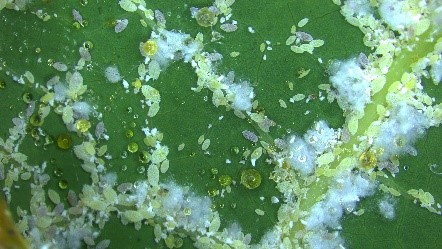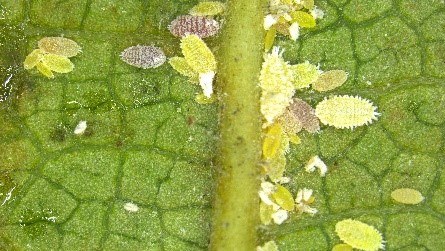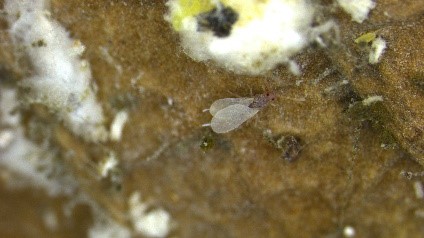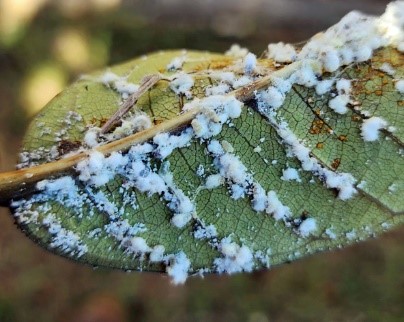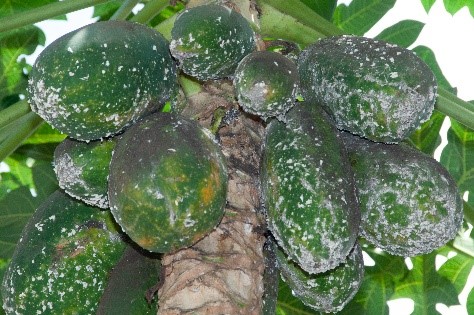Papaya mealybug
Papaya mealybug (Paracoccus marginatus) is an invasive insect pest that spreads rapidly.
It forms large infestation on leaves, fruit and stems of host plants such as papaya, frangipani and hibiscus.
It is a threat to commercial papaya production, as well as backyard trees.
There is no threat to humans posed by this pest.
Location
Papaya mealybug was first reported in July 2023 and has widely spread through Darwin, Palmerston and Howard Springs.
Appearance
Papaya mealybug can be easily mistaken for other species of insects.
Key characteristics of the papaya mealybug include:
- 2mm to 3.5mm long
- yellow body covered in white wax with a fringe of short filaments
- round yellow eggs laid inside an egg sac
- very sticky wax with lots of honeydew
- presence of sooty mould on the infested plant.
Spread
Papaya mealybug crawlers have a limited range of natural spread to neighbouring plants.
Strong winds may increase this range, as well as movement of infected plants, soils and fruits.
To prevent further spread, you should not transport infected plants. Follow the control measures below.
Symptoms
Heavy infestations of papaya mealybug cause a range of symptoms including:
- leaf chlorosis, deformation or crinkling
- premature aging of leaves
- flowers and fruit may be underdeveloped or may drop under sever infestation
- sooty mould formation around mealybug honeydew secretions
- thick white, sticky waxy coating on leaves, stems and fruit.
Control measures
If you have infected plants or trees, keep them in your garden.
This helps the papaya mealybug's natural enemies to emerge and keep them under control, such as:
- native mealybug ladybird (Cryptolaemus montrouzieri):
- for a list of suppliers, go to the Good Bugs website
- ladybird, lacewing or hover fly larvae
- parasitoid wasp (Acerophagus papayae) - originally from Central America, arrived with mealybug.
You can also spray an oil or soap-based pesticide to kill papaya mealybug.
Even if they're dead, they will remain on the plant. Scrape back the waxy coating to see if they're still alive.
When using any pesticide, always wear protective clothing and follow all label instructions.
Submit a sample
As papaya mealybug is now widely spread, reporting is no longer required.
If you wish, you can still submit a sample in a sealed bag to be tested at:
DITT Entomology
Berrimah Agricultural Laboratories
Berrimah Farm, Darwin NT
Phone: 08 8999 2258
You can also email photos to insectinfo@nt.gov.au.
More information
Read the papaya mealybug fact sheet PDF (5.1 MB).
For biosecurity alerts and updates, go to the Agriculture NT Facebook page.
Give feedback about this page.
Share this page:
URL copied!
